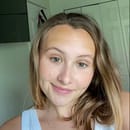Ever wondered what it would be like to make a magazine? Andi Mastanduno, public relations senior from Tampa, Florida, had the opportunity to study abroad in Florence over the summer and work on Florida State University Florence’s Magazine, ItaliaNoles.
From creative workshops surrounded by luscious gardens and chatting with Florentine locals, to wandering the city in hopes that inspiration would strike (which it usually did), Andi Mastanduno gave me a glimpse into the Media and Communications study abroad program in Florence, Italy, and what it was like to produce a magazine during the process.
Her Campus (HC): What was a typical class like?
Andi Mastanduno (AM): Typical classes were usually devoted 100% to the magazine, otherwise we would have occasional guest speakers during our class time that were devoted to crisis communication. On Monday mornings, at the start of class, we would have editorial meetings, where we would go over story pitches, and Dr. Merle would give us suggestions and feedback on our ideas. The setup of classes was always different until we kind of got the hang of what we thought was best on how to utilize our classes, which honestly was devotion to the magazine and revising one another’s articles.
HC: What was the process like of creating the magazine?
AM: Every week, each of us was tasked with coming up with our own story idea, which we would then have to go out on our own time and interview locals in Florence to include as direct sources for the topic of our stories. After we sent the stories to Dr. Merle, he would choose which articles were going into the magazine, and we would then need two or three additional edits from him and the other girls in the class to make our stories stronger. Once the editing process was done and we had approval, those stories would get added to the magazine. We also had a design team, a photography team and an editor-in-chief. These teams had extra responsibilities on top of the articles such as take photos for visual content and design of the magazine, but the whole class was very hands-on, and anyone could help out even if they weren’t assigned to the team.
HC: Can you go more into what the writing process was like?
AM: The writing process was difficult to get the hang of for the first two weeks. Since we were studying abroad, we had a commitment to our classes and getting our work done, but we all also wanted to travel throughout Italy and Europe. In the beginning, it was difficult to time-manage everything, but over time I think I learned how to keep a good balance where I was producing good content while also getting to be social, go out and travel. It always started with getting an approved story idea, and once I had that, I would spend a day or two getting quotes from relevant sources. After I had those, I would transcribe the audio recordings I would take from my interviews and pick out the strongest quotes that backed up my story idea. Then, I actually sat down and wrote my articles, which would normally range between 300-500 words. It was important to also include descriptors and observations outside of the quotes we had, so all stories had a really good combination of the three. The very last thing I would do was come up with an article title, which I would sometimes ask a friend for help with because, by that point, my creative juices were well extinguished.
HC: What guest speakers came, and what stuck out the most to you from their talks?
AM: My favorite guest speaker was probably Betty Soldi. We took a class trip to her calligraphy studio in Florence, which overlooked a beautiful private garden and had large French doors that we left open to let in the fresh air and sunlight. We did a workshop while she talked to us, helping us to let loose and write beautiful, loopy, cursive writing. She spoke to us about her passion for calligraphy and how she decides to work with certain businesses that want her. She told us not to feel forced in working with a business if we felt like they weren’t a good match with who we were and what our services stood for just for the money. It really put into perspective for me how important my morals and values were to my brand and my inner being. It’s something I want to hold dear to myself and not let the mention of money break those values.
HC: What was the biggest takeaway from producing ItaliaNoles?
AM: The biggest takeaway from producing the magazine was honestly just learning to have faith in my capabilities. We were all pushed out of our comfort zones with this magazine, but I’m really glad we were because I learned how to be more social with strangers and go up to people without fear of weirding them out. It also helped me realize that I am a strong writer, and I actually know what I’m doing. Because I’m majoring in public relations, writing and communication are the two biggest things in the field I’m studying to be in, and I always just told myself I was mediocre at what I did. I never really let myself feel proud of the things I’ve accomplished in the past because, to me, it was just average. Getting to produce ItaliaNoles for those six weeks made me feel proud of myself again and have full confidence in everything I do and the path I’ve chosen for myself. That’s a really great feeling, it makes me excited for everything else I will accomplish in the future.
Be on the lookout for the Summer 2022 Edition of ItaliaNoles in the upcoming weeks!
Want to see more HCFSU? Be sure to like us on Facebook and follow us on Instagram, Twitter, TikTok, YouTube and Pinterest!


